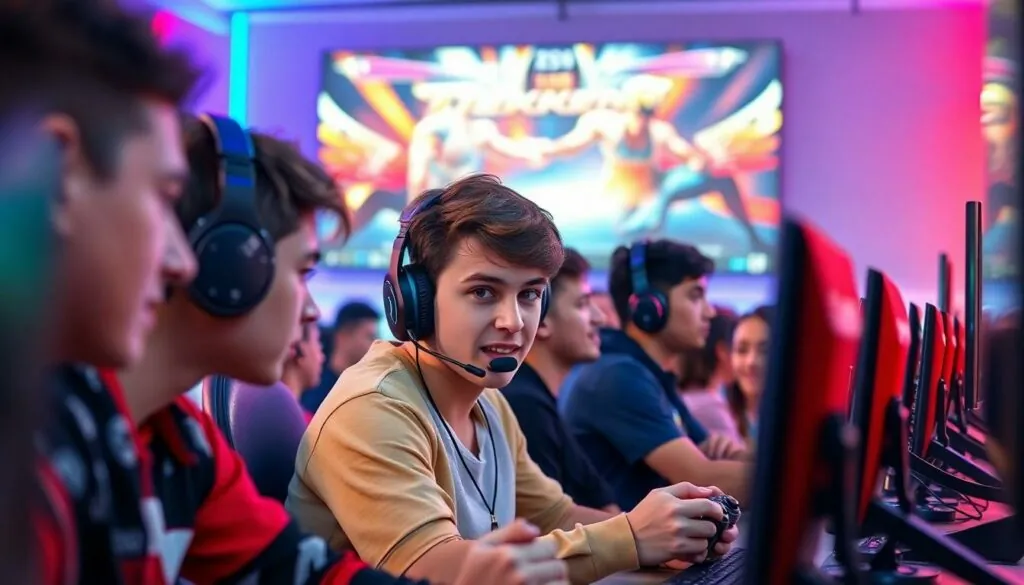In the electrifying world of Tekken 8, players are not just battling for pride; they’re diving headfirst into a ranked distribution that’s as unpredictable as a wild combo. Whether you’re a seasoned fighter or a newbie trying to master the art of the perfect uppercut, understanding the ranked distribution can be your secret weapon. It’s like knowing the cheat codes to your favorite arcade game—except this time, the stakes are higher, and the opponents are tougher.
Table of Contents
ToggleOverview of Tekken 8 Ranked Distribution
Ranked distribution in Tekken 8 categorizes players into various tiers based on their performance. Each tier represents skill levels, ranging from beginner to expert. Players enter ranked matches to earn points and climb the ranks, making the system highly competitive.
Understanding the distribution helps players gauge their abilities relative to others. It provides insights into matchmaking and expectations in battles. The tier system often includes ranks such as Bronze, Silver, Gold, Platinum, Diamond, and Master, enabling players to recognize their progression.
Data shows that most players fall within the Gold and Silver ranks. This clustering reflects the overall skill level among the community. Focusing on improvement within these ranks can lead to significant enhancements in gameplay.
Additionally, players often face challenges moving beyond their initial ranks. These hurdles frequently stem from matchmaking against opponents at higher skill levels. Recognizing personal weaknesses and seeking targeted practice can aid in achieving tier elevation.
Competitive participants also benefit from studying the ranked distribution patterns. Analyzing common tactics among higher-ranked players can reveal effective strategies. Observing win rates and match history contributes to a deeper understanding of personal performance.
Engagement in the ranked system is crucial for player development. As participants gain experience, they learn which characters and strategies work best in specific matchups. This adaptability proves essential for climbing the ranks in the unpredictable environment of Tekken 8.
Ranked Modes in Tekken 8
Ranked modes in Tekken 8 engage players in a competitive environment, facilitating skill development and progression. Understanding the various modes can improve performance and enhance the overall gaming experience.
Types of Ranked Matches
Ranked matches in Tekken 8 primarily include standard matches and tournament formats. Standard matches focus on individual performance, with players adjusting their strategies based on opponents’ skills. Tournament formats may introduce additional rules, promoting structured competition among participants. Players accumulate ranking points through victories, allowing them to progress through tiers such as Bronze, Silver, Gold, and higher. Earning points requires consistent performance, making each match critical for advancement.
Differences Between Casual and Ranked Play
Casual play focuses on enjoyment rather than competitive advancement. Players often experiment with characters, strategies, and techniques without the pressure of a ranking system. Ranked play, in contrast, emphasizes skill and improvement. Players face opponents with similar ranks, creating challenging environments that push players to refine their skills. In ranked mode, winning directly impacts ranking points, making victories crucial for progress. Understanding these differences can help players better prepare for the demands of ranked matches.
Analysis of Player Rankings
Analyzing player rankings in Tekken 8 reveals significant insights into competitive dynamics.
Factors Affecting Ranked Distribution
Skill level serves as the primary factor determining ranked distribution. Players earn ranking points through victories, and performance against similar-ranked opponents plays a crucial role in this. Matchmaking algorithms continually assess player skills, ensuring balanced matches. Participation frequency also impacts rankings; players who compete more often gain a deeper understanding of strategies and character matchups. Furthermore, the variety of characters selected influences rank progression. Players excelling with specific characters often find themselves advancing more rapidly through the tiers.
Comparison with Previous Tekken Titles
Ranked distribution in Tekken 8 differs notably from earlier titles in the series. Previous games featured simpler progression systems, while Tekken 8 utilizes a more refined tier system that better categorizes player skills. The introduction of precise matchmaking has resulted in a more competitive environment, affecting players’ experiences and strategies. In past titles, players frequently experienced one-sided matches that lacked balance. Now, players engage with opponents who are more closely matched in skill level, fostering a more challenging gameplay atmosphere. These changes underscore the evolving nature of competitive play in Tekken, enhancing the overall gaming experience.
Community Feedback on Ranked Distribution
Community feedback regarding ranked distribution in Tekken 8 highlights both satisfaction and areas needing improvement. Players aim to understand how their performance shapes their ranking and interactions.
Player Perspectives and Experiences
Players express varied experiences in navigating ranked matches. Common sentiment reveals frustration regarding matchmaking, especially when encountering opponents far above their skill level. Many players report a tendency to cluster within the Gold and Silver tiers, reflecting the game’s competitive nature. Climbing the ranks appears rewarding, but personal growth often seems stymied by higher-skilled adversaries. In contrast, some players appreciate how ranked matches facilitate skill refinement, offering challenges that push their limits. Engaging with these matches provides insights into effective strategies and character matchups. This dynamic underscores the importance of recognizing the competitive landscape and adapting accordingly.
Suggestions for Improvement
Players frequently suggest enhancements for matchmaking systems to better balance skill levels. Implementing a more refined tier allocation could address concerns around competitive fairness. Increasing transparency in ranking criteria also ranks high on players’ lists, as clearer benchmarks for advancement would guide improvement efforts. Many participants advocate for additional resources that assist in analyzing gameplay, such as tutorials or strategy guides tailored to specific tiers. They also urge developers to consider seasonal events or challenges that can invigorate ranked play, keeping the community engaged while promoting an evolving competitive environment. Optimizing these aspects could significantly enrich the overall player experience in Tekken 8.
Conclusion
Understanding the ranked distribution in Tekken 8 is vital for players aiming to enhance their competitive edge. By recognizing their current tier and the challenges of moving up, players can tailor their practice and strategies effectively. Engaging with the ranked system not only fosters skill development but also promotes a deeper appreciation for the game’s mechanics.
As players navigate through the tiers, they can learn from both victories and defeats. This journey through ranked matches reveals the intricacies of character matchups and effective tactics. With ongoing community feedback and potential improvements to matchmaking, the experience in Tekken 8 is set to evolve, ensuring that players remain challenged and engaged in their quest for mastery.



